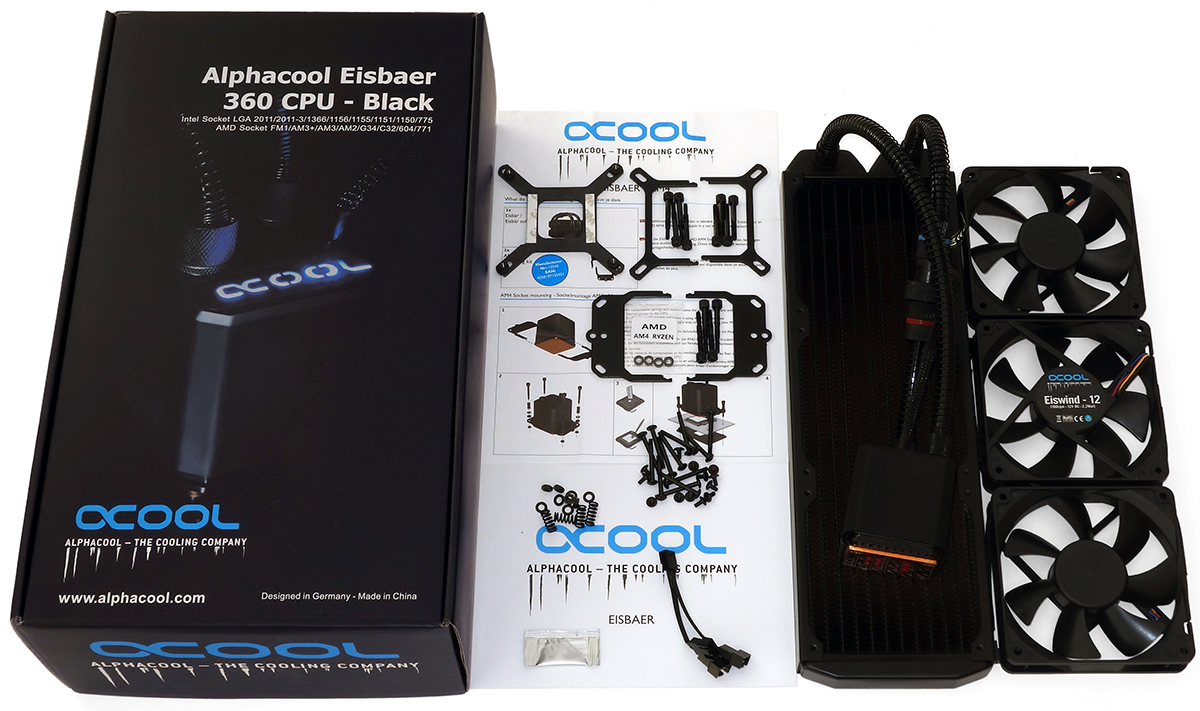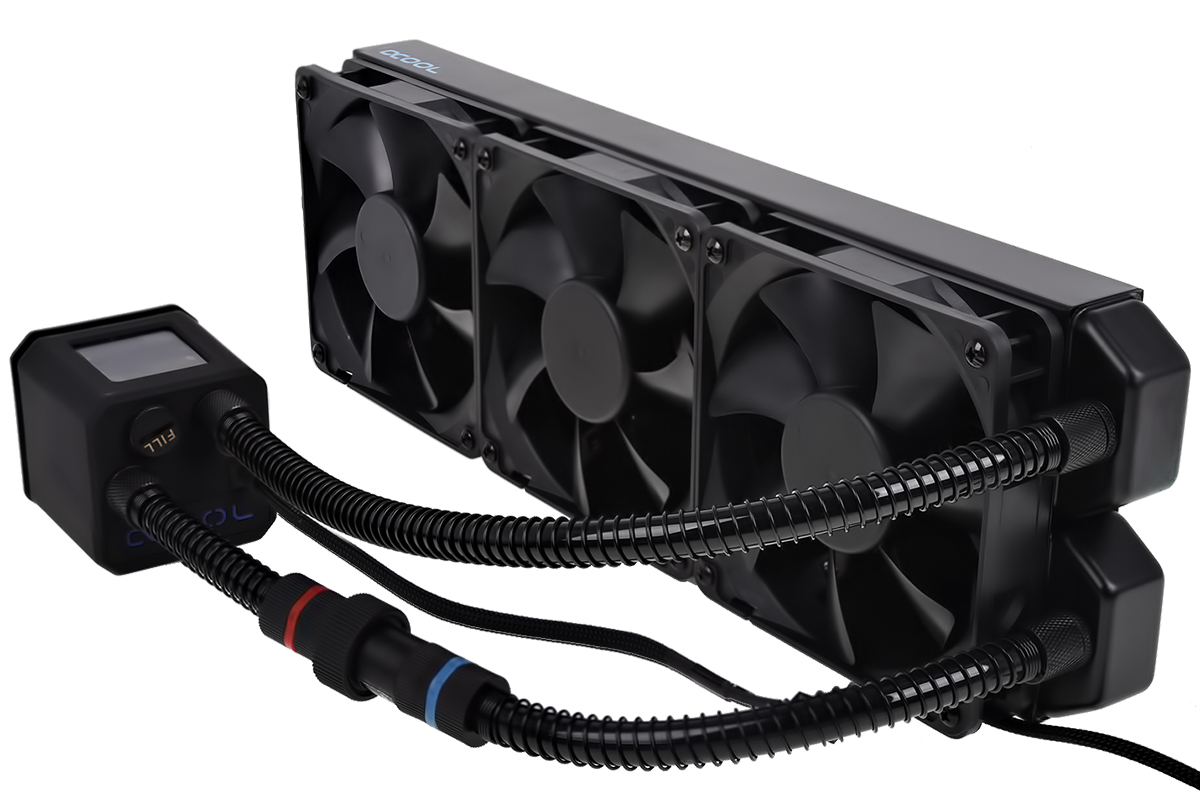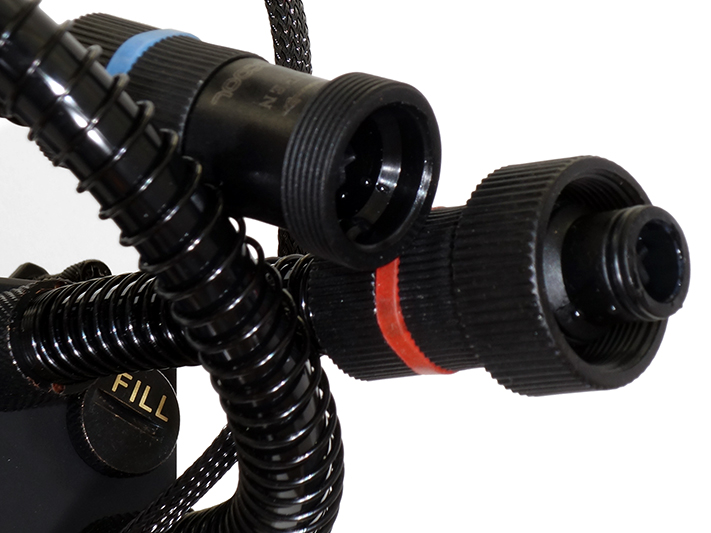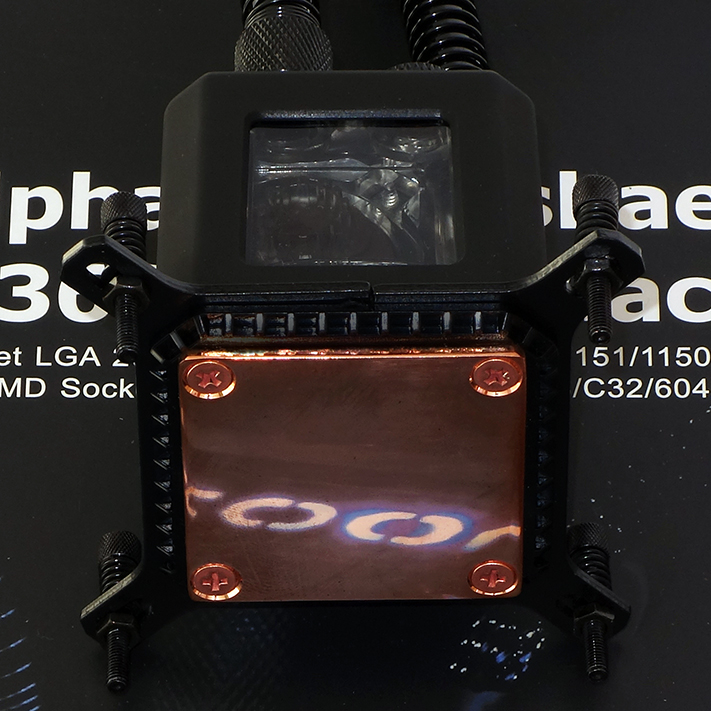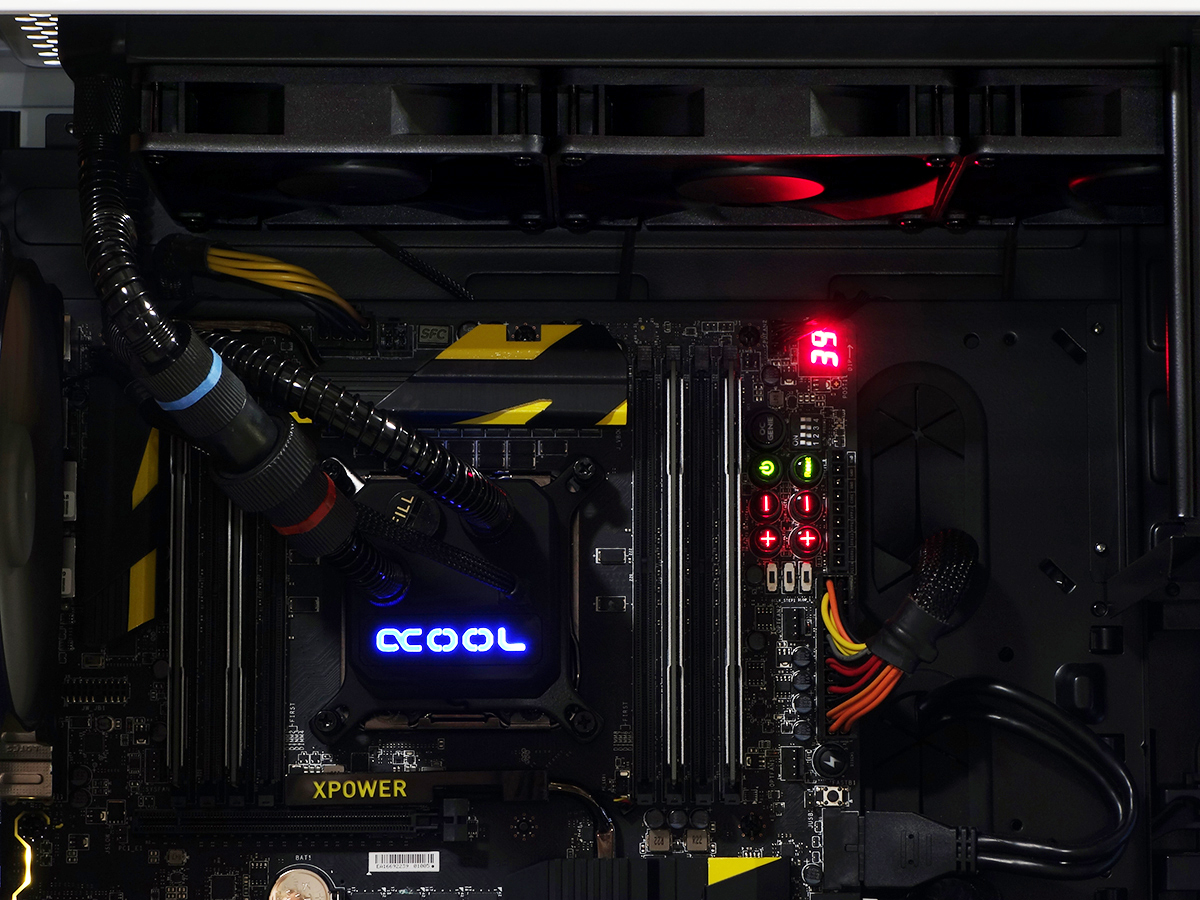Early Verdict
With more flow capacity, a larger radiator, and a leak-free quick coupling, the Eisbaer 360 CPU appears better-suited to fitting additional components than the value-awarded Celsius S24. It also costs around 50% more, putting it at odds with Swiftech and EK units that have even-better-rated pumps. Informed buyers should choose between Alphacool’s big radiator or its competitor’s larger pumps based upon the requirements of other components they may wish to add later.
Pros
- +
High radiator capacity
- +
Good noise control
- +
Leak-free quick-connect coupling eases upgrades
Cons
- -
Modest static pressure rating affects component selection
Why you can trust Tom's Hardware
Features & Specifications
Alphacool joined the liquid cooling party a few years ago, but it wasn’t until last year that we started to see complete, factory-filled loops from the company. Filled systems allow neophytes to build without worries of leaks or purging, and then add components later as they become more comfortable mixing water and electricity <wink>. Alphacool’s filled kits go a step further towards inspiring that confidence by including a leak free, quick-coupling that lets you add a component without draining the loop. Designed for three 120mm fans side-by-side, Eisbaer 360 is the company's largest model to date.
Specifications
Unpacking an enormous box reveals the behemoth radiator with pump and cooling lines attached, three fans rated at 1700 RPM, and installation kits for Intel’s square-ILM LGA interfaces, AMD’s legacy 4-bolt sockets, and AMD’s modern Socket AM4.
The “DC-LT 2600 Ultra low noise ceramic” pump is built atop a CPU water block, in a configuration I typically call a “head unit.” Speaking of that, the pressure of this 70LPH pump is only rated at 0.85m head, which means it probably won’t work all that well with restrictive accessory blocks. Alphacool’s own Eisblocks are likely designed to maintain proper flow rate at that relatively low pressure.
Proof of Alphacool’s leak-free coupling can be seen by simply unscrewing its collar. Even though the system is completely filled, only the tiniest droplets of coolant are exposed.
Mounting brackets snap together inside a groove surrounding the head unit, near its base. Three different sets of screws are designed to fit the factory socket support plate of most AMD motherboards, the LGA 775 through 1366 support plate supplied by Alphacool, or the integrated support plate of LGA 2011/2066. Simply insert each of the four screws selected for your socket through an included spring, washer, and bracket hole before adding nuts to hold the pieces together. Alphacool now includes another set of spacers for AM4 boards that have flush support plates.
You can see in the image above that the head unit’s contact surface is nearly perfectly polished with minimal waviness, and gold plated to prevent oxidation. A protective plastic sticker that prevents scratches during shipping has been removed for that photo, and must be removed prior to installation to assure proper contact with the CPU’s heat spreader.
Since our LGA 2011-v3 platform has an integrated support plate, the head unit simply screws in place after adding thermal paste. We screwed the Eisbaer’s fans to the bottom of the radiator before screwing the radiator to the top of our case.
Get Tom's Hardware's best news and in-depth reviews, straight to your inbox.
MORE: Best CPU Cooling
MORE: How To Choose A CPU Cooler
MORE: All Cooling Content
-
thrakazog I can understand why you might not have a Predator 360 for comparison, as the Predator line was discontinued. I do find my self wondering about not using a Fractal Design S36, as it is still readily available. I am very appreciative of the review for a 360 AIO, as I plan on using one in my new build. I would have liked it compared to other 360 AIO's though.Reply -
Crashman Reply
OK20066693 said:I can understand why you might not have a Predator 360 for comparison, as the Predator line was discontinued. I do find my self wondering about not using a Fractal Design S36, as it is still readily available. I am very appreciative of the review for a 360 AIO, as I plan on using one in my new build. I would have liked it compared to other 360 AIO's though.
-
RomeoReject I know it's a bit late to ask now, but in the future, is it possible to see how expandable AiOs perform with a GPU block added in? Because that does seem to be a big part of them being expandable. Otherwise one would be better served just using a "normal" AiO.Reply -
JackNaylorPE I agree ... there is a Swiftech 320 X2 as well as am EK Predator w/ 3 x 120mm so I agree with the above poster that the review would be more useful with an apples to apples comparison. But I have to make the same comment that we make on every water review here at THG ... why is there no mention of he radiator material ?Reply
Form the site
Alphacool relies on a radiator made of full copper. The base of the radiator is the popular Alphacool NexXxoS series, which is extremely popular worldwide. The pure copper construction enormously increases the cooling performance compared to the conventional aluminum radiators of classic AIOs."
The statement that "Informed buyers should choose between Alphacool’s big radiator or its competitor’s larger pumps based upon the requirements of other components they may wish to add later. " is misleading.
Buyers **do not** have to make that choice because both the Predator and the Swiftech offer the same size radiator with pumps that are capable of delivering more approrpiate flow rates and pressures.
